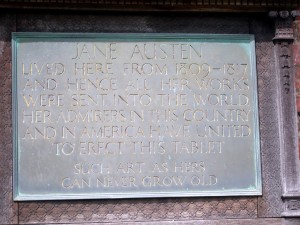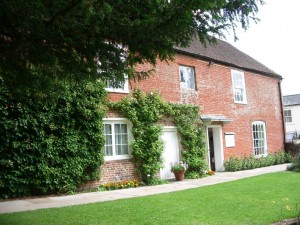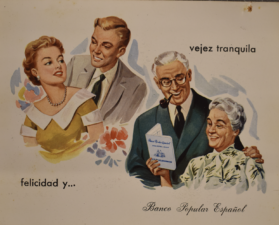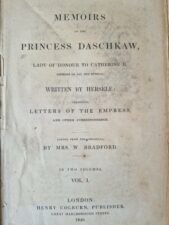Robin Joyce
Part 2

Photo: Robin Joyce
 Austen was apparently trapped by conventional ideology. At the same time, she attempted to advance progressive ideas about women’s situation without appearing to recommend Wollstonecraft’s sexual irregularities and her suicide attempts. To write novels of social criticism, authors had to develop strategies of subversion (Johnson p.19). Resisting the boundaries, Austen’s strength is in portraying women who, while not feminist, raise awareness of the cracks at the very foundation of her culture. Austen achieves this through a variety of strategies: irony; mockery; drawing upon expectations of male and female behaviour and transposing such characteristics to confound expectations; or using the conforming woman who raises radical ideas or changes to become a troublesome woman as the narrative progresses. [1]
Austen was apparently trapped by conventional ideology. At the same time, she attempted to advance progressive ideas about women’s situation without appearing to recommend Wollstonecraft’s sexual irregularities and her suicide attempts. To write novels of social criticism, authors had to develop strategies of subversion (Johnson p.19). Resisting the boundaries, Austen’s strength is in portraying women who, while not feminist, raise awareness of the cracks at the very foundation of her culture. Austen achieves this through a variety of strategies: irony; mockery; drawing upon expectations of male and female behaviour and transposing such characteristics to confound expectations; or using the conforming woman who raises radical ideas or changes to become a troublesome woman as the narrative progresses. [1]
Austen also exhibits her unwillingness to set her women into the model that sees marriage as the only happy ending for a woman by her ‘notorious refusal to depict her heroine in the act of saying “yes’ to proposals of marriage’ (Johnson, p. 21). Although it is suggested that Austen is uncomfortable with the associated emotion (Johnson, pp. 21-22) this analysis fits uneasily with Austen’s ability to describe rejection of proposals in detail. This is a far more emotional situation as a woman is not only defying a man but is refusing an economic necessity. Austen proposes that the reader chose a solution that defies convention: ‘I leave it to be settled by whomsoever it may concern, whether the tendency of this work be altogether to recommend parental tyranny, or reward filial disobedience’ (NA quoted in Johnson, p.24).

Photo: robin Joyce
While ‘gaze’ is a modern feminist concept (The Female Gaze, 1994) Austen also uses it to make point. She never describes a scene between two men when no woman is present. Although it is suggested that this is because she has never seen one [2] this is self-explanatory and rather simplistic, suggesting that Austen merely records events with which she is familiar. She clearly does use her imagination throughout her narratives so is there another explanation? One is that Austen considers men only important under a woman’s gaze.
Another aspect of Austen’s refusal to accept women’s secondary role is the way in which she gives Anna Laetitia Barbauld, a ‘leading critic of fiction with her groundbreaking edition of The British Novelists (1810)’ a place in Persuasion (1993). It is argued that Austen adopts Barbauld’s ideas (McMaster and Stovel, pp.8-9). Anne’s argument that gender differences are due to social environment rather than gender is particularly radical, and contrasts with her conforming role early in the novel. Contradictory images of female and male roles in this novel are another example of her non-conformity. Sir William’s vanity, Mrs. Clay’s comment on gainful employment and how it might spoil a man’s looks, Anne’s mother’s solid judgement despite a youthful infatuation, the Crofts, Anne’s ability to see the comic while she is distressed about Wentworth (McMaster and Stovel, pp.10-11) are all examples of Austen’s asking difficult questions.
Although Austen’s letters (Le Faye, Jane Austen’s Letters) are compromised because some are missing, they provide some insights into her preparedness to identify women’s inequality. Her letters clarify the idea more subtly embraced by her novels that marriage is not necessarily the happy ending to romance, despite the courtships that form the core of her narratives. Austen’s letters also confirm her lack of romantic ideals. In addition, while she supports some of the social conventions, there are others she disregards, if only in the privacy of her correspondence to Cassandra. Lastly, she demonstrates a business-like approach to the publication and sale of her novels, clearly wishing to make her writing pay, rather than hiding behind a ladylike demeanour and purporting to write only for the pleasure of herself and her family. In many ways a private person, she happily claimed a public image for herself as a writer of challenging ideas.
Austen’s attitudes toward marriage expressed through her novels are littered throughout her letters to Cassandra, suggesting that it does not take a particular reading of the fiction to establish her unromantic view of matrimony. For example, she highlights the importance of availability, cynically commenting that where there were two curates available Mary ‘must fall in love with one or other’ (Le Faye, p.191). Her belief that marriage was often entered to meet community expectations rather than romantic attachment is demonstrated through her statement that ‘She wanted to have a husband I suppose, once in her life and he a Lady Francis (Le Faye, p.157), and again, that a bride must be happy just because she is a bride – whatever the husband’s qualities (Le Faye, p.197 and see also pp.153-154). In both these statements, Austen shows that in the economic interaction between women and men marrying women are worth less. In the first example, the woman attains a husband, but he wins not only a wife but one who has a particular status; in the second case, a woman’s happiness resides in being a bride, the man does not have to be anything more than a man – he can be quite without merit.
Lady Susan provides the fictional correlation to Austen’s personal view that commitment to the niceties of 19th century convention should be questioned. Lady Susan is a manipulative widow. Fay Weldon comments in her Letters to Alice On First Reading Jane Austen that Austen’s family would have found it ‘…unedifying and foolish, and the wicked adventuresses should not be heroines’. Austen did not try to have Lady Susan published and nor did her family. It is often described as the forgotten novel, but it is possible that Austen gave herself licence to go as far as possible in developing this character while restraining herself in future novels.
Most importantly Austen embraces what was to become the overriding question that focussed 1970s feminists’ minds: the injustices of patriarchy. By developing the whole of Sense and Sensibility around the story of four women’s attempts to redress economic poverty because they lose a husband and father Austen demonstrates the economic necessity for marriage. Reinforcing the power associated with being male and the idiosyncratic manner in which that power can be used is Henry Dashwood’s decision to leave his estate to John and Fanny’s son. While demonstrating his power over property, capricious but well within the ideology of the time, the impossibility of women’s good behaviour to gain favour is also clear. They are unable win to themselves anything the powerful male wishes to deprive them of despite their former care for him. Benefit to a young male who has captivated rather than to the family which has nurtured is the story of patriarchy. By showing the consequences of Dashwood’s decision Austen questions men’s power and its effect on not only its victims but its beneficiaries.
[1] See, for example, the use to which Austen puts Anne Elliott.
[2] McMaster, Juliet and Stovel, Bruce (1996) Jane Austen’s Business Her World and Her Profession Macmillan Press Limited: Hampshire and London.
Robin Joyce is an independent scholar whose interests include analysing fiction from a feminist perspective and research women’s political activism.

